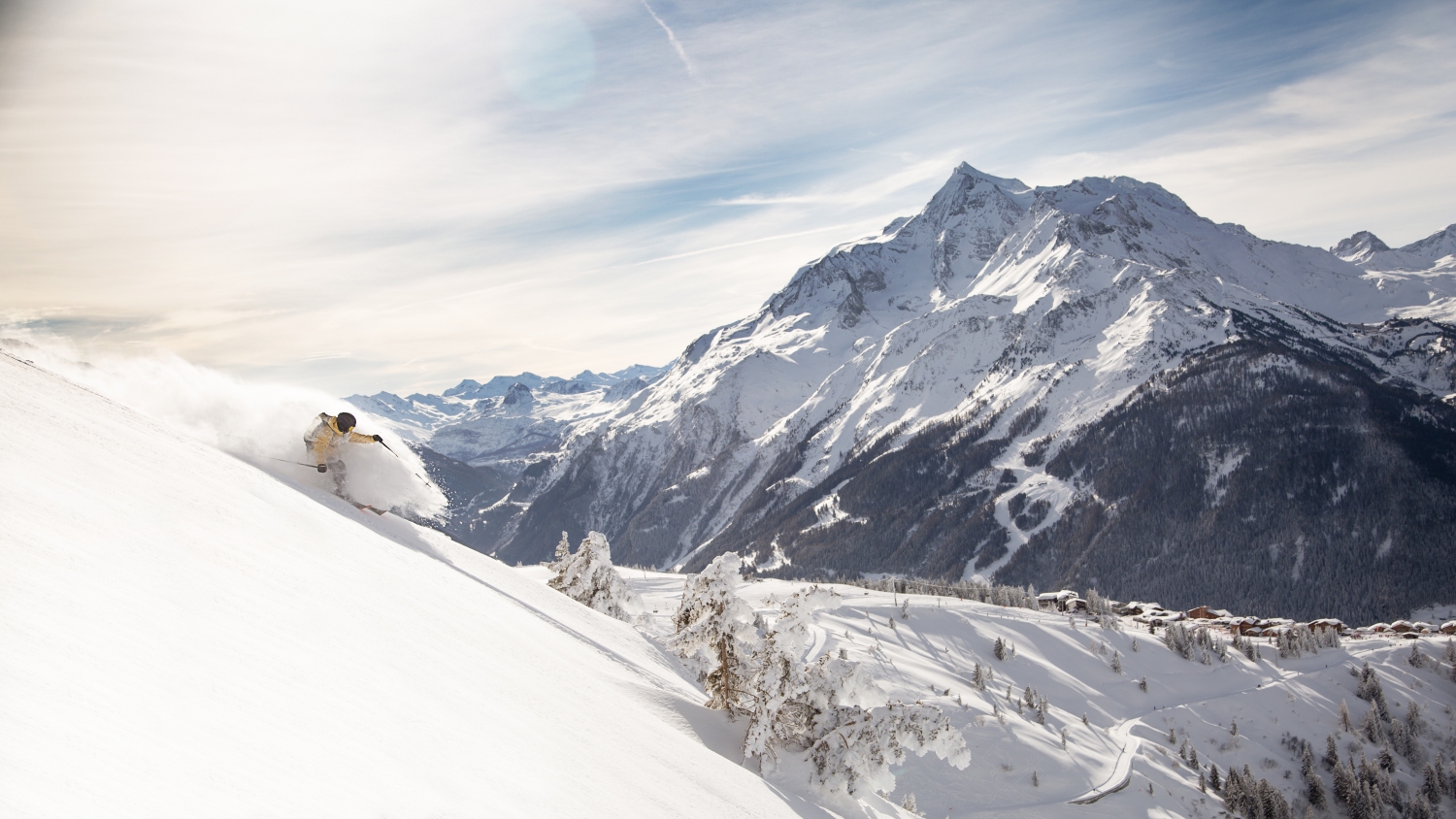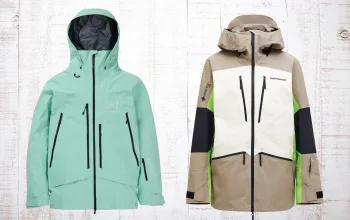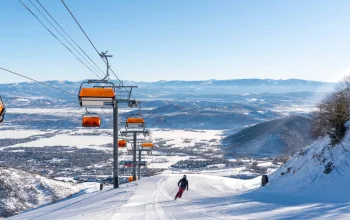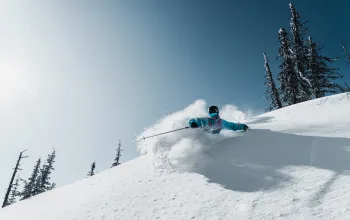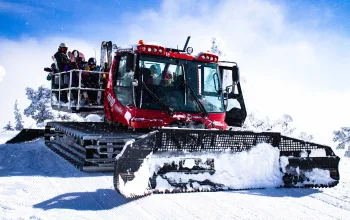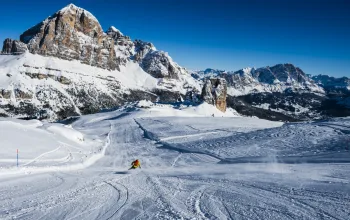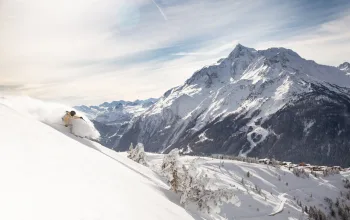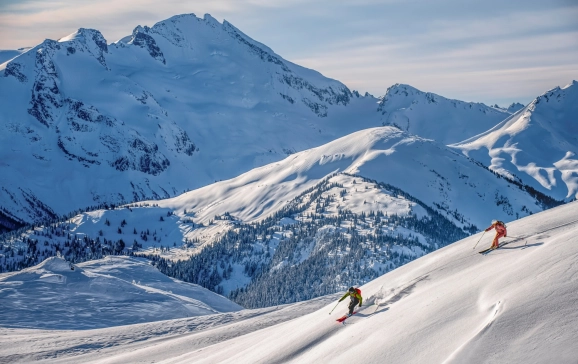Independently researched and written by the Snow Team, sponsored by the experts at Sunweb
There’s a reason why skiers and snowboarders from all over the world flock to France: quite simply, it’s got home to many of the best ski resorts in the world. Whether you’re after a quaint, family-friendly ski town or a high-altitude mega resort with direct access to the slopes and brilliant springtime skiing, France won’t let you down.
Despite having many natural advantages (including some of the shortest transfer times, and being among the best resorts to travel to by train) France's ski destinations never rest on their laurels. Innovative developments—whether in snow-making, hotel concepts or cuisines—appear on a regular basis, and many resorts launch new activities every winter season. Meanwhile, investments in old favourites such as Serre Chevalier, Val d’Isère and La Plagne (about to open a new £22 million gondola) help them retain their status.
France's biggest natural advantage is, of course, its geography. The Alps offer some of the steepest and most varied skiable terrain on the planet, and the majority of France’s resorts can be found in the heart of this beautiful range. Over the years, France has developed arguably the world's richest alpine skiing culture—there's a reason why French skiing terms are used in so many languages, most famously post-slope drinks which are known universally as "après ski". In France, après no longer just means slope-side beers, but parties on the piste (we’re looking at you, Folie Douce), chic cocktail bars, and fantastic festivals—including the largest in the Alps, Tomorrowland Winter, which attracts over 20,000 people to the slopes of Alpe d'Huez.
There are hundreds of incredible French ski resorts to choose from—from tiny traditional villages like Bonneval-sur-Arc (a personal favourite) to the modern, mega-resorts of the 3 Valleys. We've focussed mostly on the latter here, as they satisfy the broadest range of skiers. We've also concentrated solely the Alps, because we list the best ski resorts in the Pyrenées separately (and yes, we know you can technically ski in the Massif Central, but the resorts aren't really big enough to attract anyone other than locals).
We've chosen several of the biggest-name destinations in the biggest ski areas here, because they really do have it all. But if you're looking for something more specific, there are plenty of French destinations featured in our lists of the best backcountry resorts, best family-friendly resorts, and the best places to party.
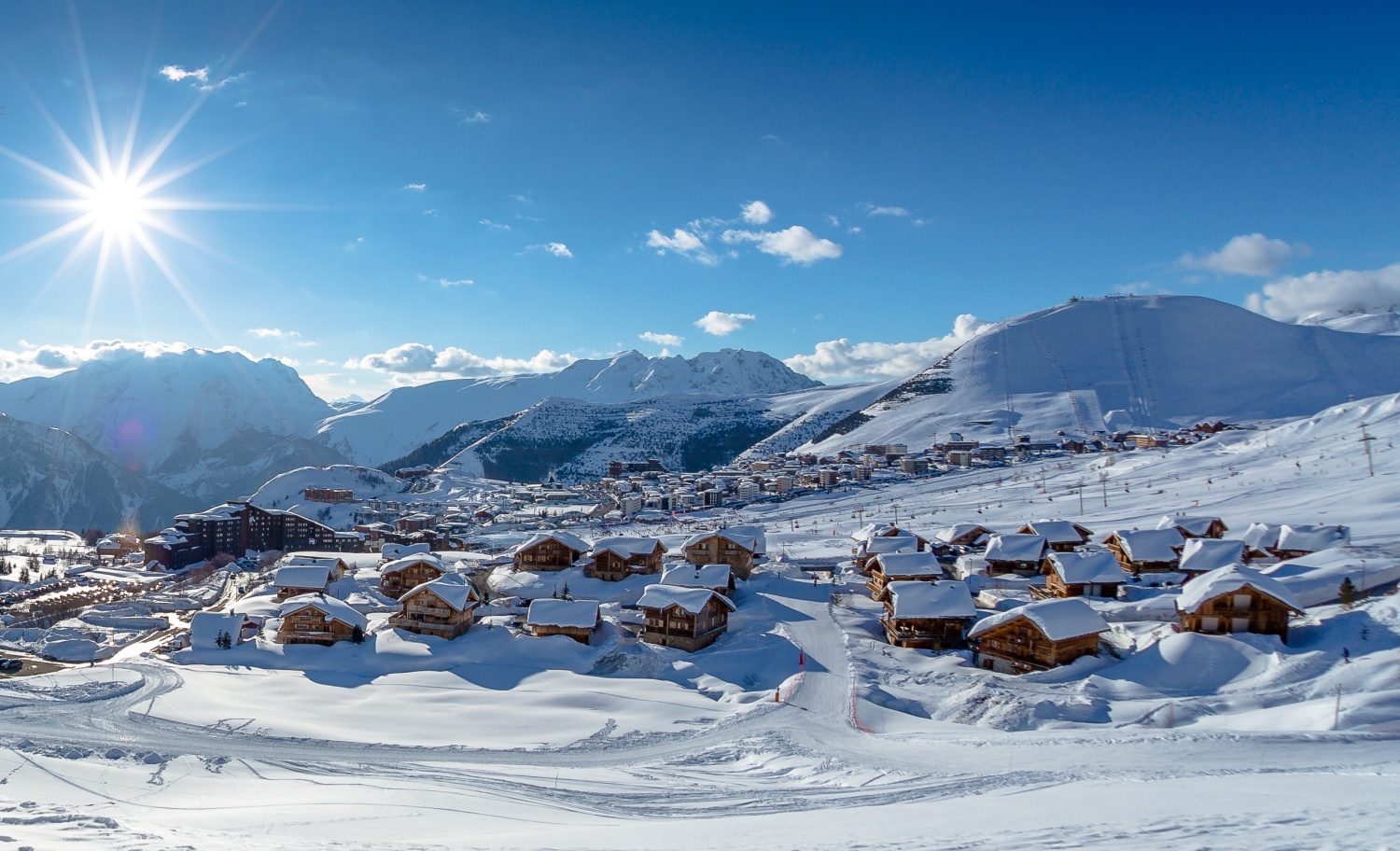
Alpe d’Huez
Got a head for heights? You’ll love Alpe d'Huez, which tops out at 3,300m. It’s the largest resort in the Grand Domaine ski area, which combines Auris-en-Oisans, Huez-en-Oisans, Oz-en Oisans, Vaujany and Villard, so it's perfect if you love a base which offers effortless access to neighbouring resorts.
The resort’s location in the heart of the Grand Domaine area means allows skiers to carve up 249kms of ski runs catering to all skill levels –there are 41 green pistes, 34 blue pistes, 40 red pistes and 16 black pistes. Our favourite? The 16-kilometre La Sarenne, which is the longest ski run in Europe. On powder days, the areas off the edges of this black run provide some of the best "sidecountry" terrain in Europe.
This is an incredibly family-friendly ski holiday destination, hence its Famille Plus designation, awarded by France Montagnes, the national tourism marketing body, to resorts best suited to family ski holidays. It’s also a brilliant choice for fans of sunny spring skiing – it’s known for its warm, sunny days, hence its nickname l’Isle au Soleil, meaning the island in the sun. Our favourite spot for sun-soaked après ski session? The terrace of the La Folie Douce, by the Marmottes 1 lift.
Take a look a our full Alpe d’Huez ski resort guide for more details.
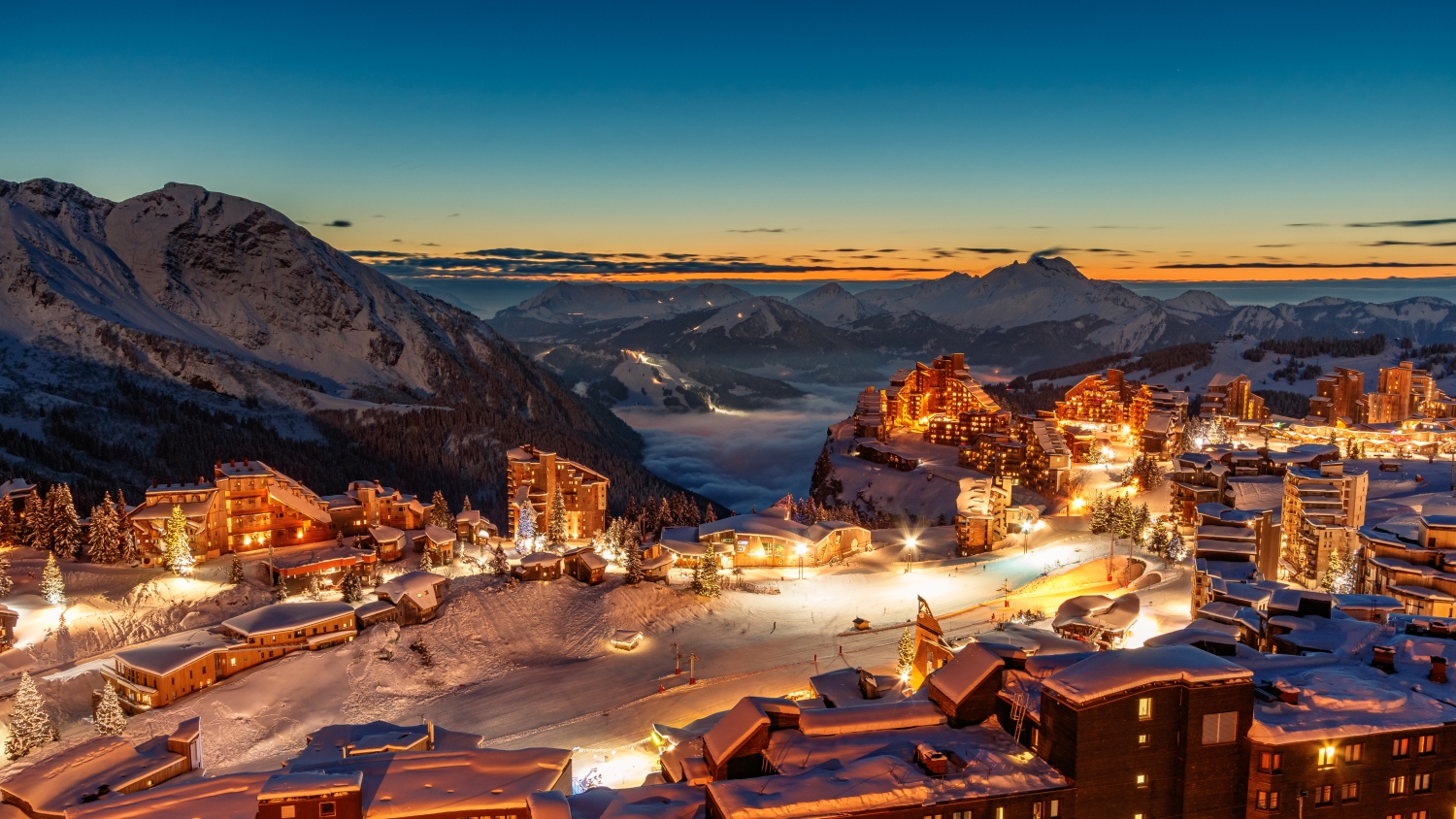
Avoriaz
Avoriaz is one of France’s most sustainable ski resorts, but it’s not just ticking boxes—in addition to Green Snowflake certification, the resort has conducted a massive study into the effects of climate change on snow conditions which it's using to dictate its future plans.
This vehicle-free ski resort, perched at 1,800m on the edge of a dramatic cliff, has always been one of France’s top destinations for skiers and snowboarders. It sits at the heart of the Portes du Soleil ski area, which straddles the French-Swiss border. The combination of its high altitude and a 600-kilometre network of runs ensures brilliant snow conditions, and the compact design means that you can walk to almost everything—from restaurants to supermarkets— sometimes without ever going outside.
Avoriaz is also regarded as one of France’s best ski resorts for families, and with good reason; kid-friendly features include the tepee-dotted Village des Enfants d’Annie Famose, where children and teenagers can come for a wide range of activities. There’s plenty for thrill-seekers too though, including two Burton fun parks, plenty of easily accessible backcountry terrain and one of France's few full half pipes.
Read our full Avoriaz ski resort guide for more information.
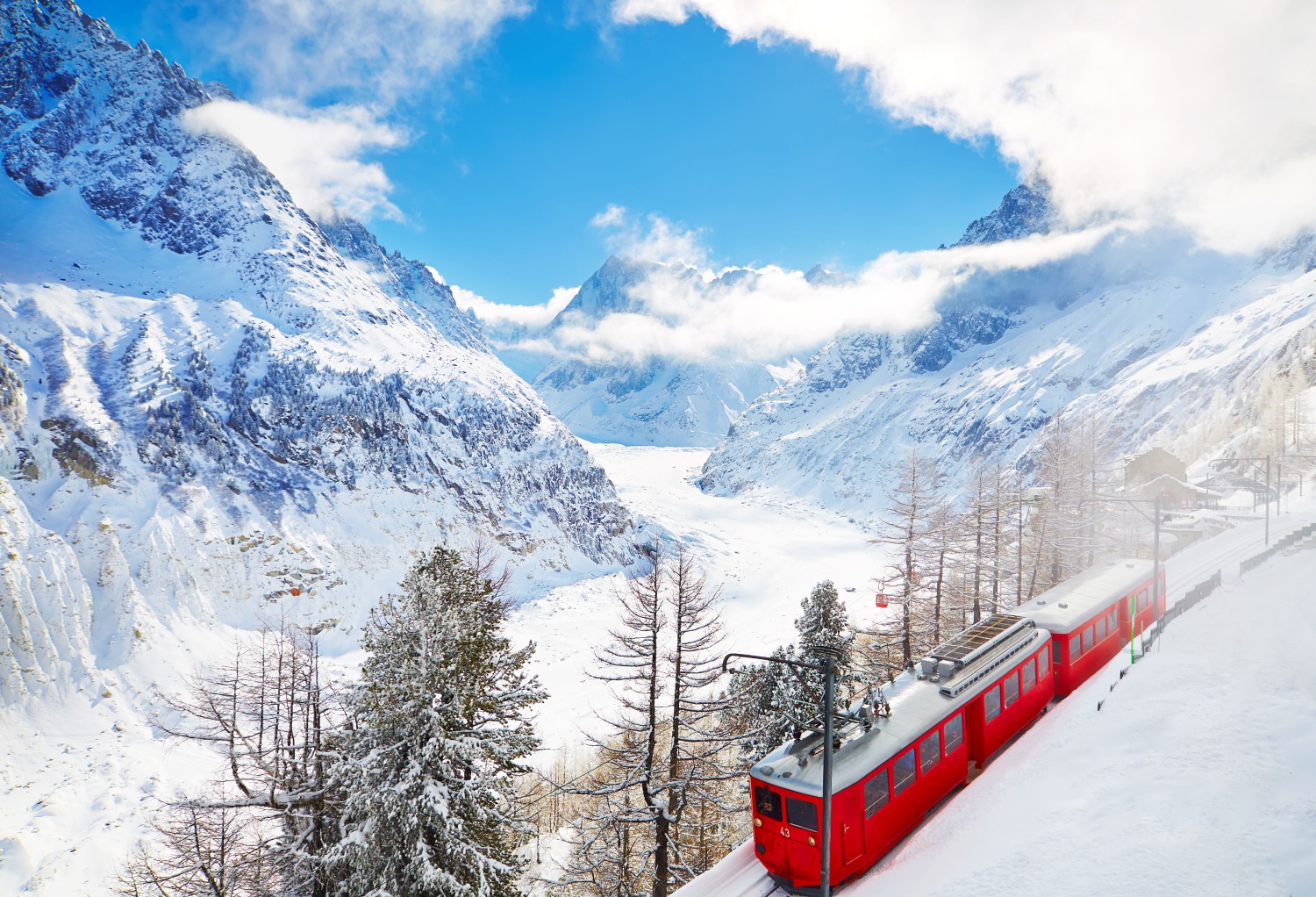
Chamonix
Huddling in the shadow of the Mont Blanc massif, Chamonix is one of the most famous ski resorts not just in France, but in the world. It's known for its mountaineering history, brilliant glacier skiing and vast array of terrain—including some of the steepest, most technical off-piste you'll find anywhere in the Alps.
In fact, calling Chamonix a ski resort is doing it a bit of a disservice. It's a fully-fledged mountain town, with a year-round population of 10,000 people, and all the amenities you'd expect to find serving them. Altitude-wise, the town itself isn't super high, sitting at 1,035m, but the resort around it includes the Aiguille du Midi lift, which carries you up to 3,842m. And of course if you're prepared to go mountaineering, you can reach the summit of Mont Blanc itself, 1,000m further up.
It's not one of the best ski resorts for beginners, but there are learner areas. It's also worth noting that Chamonix is just an hour's drive from Geneva, so if finding a ski resort with a short transfer time is your priority, it's worth a look whatever level you're at.
Find more information on our full Chamonix ski resort guide.
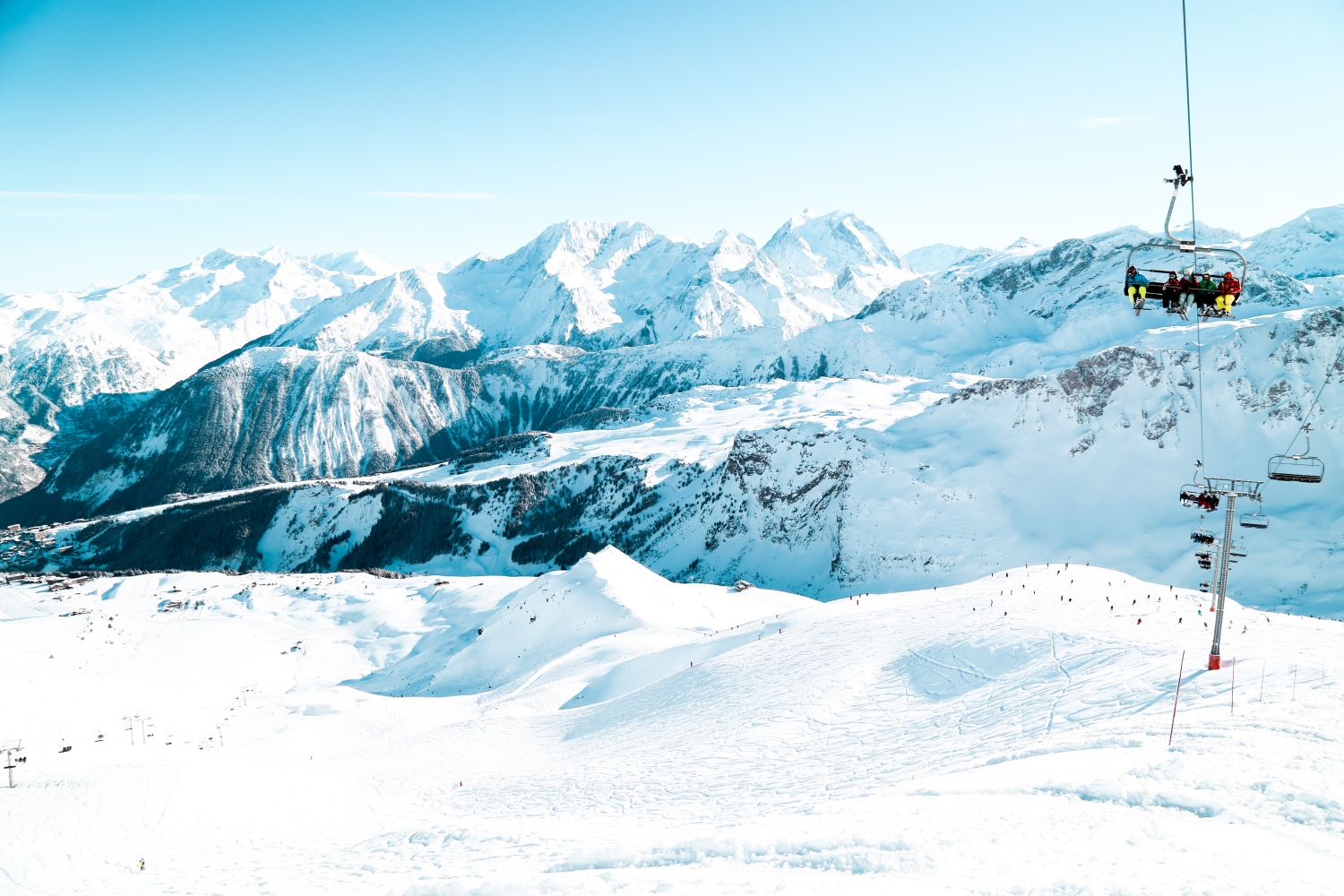
Courchevel
Courchevel is big, beautiful and luxurious. Méribel might be prettier, and Val Thorens might be higher, but when it comes to international reputation, this is the most famous ski resort in the vast 3 Vallées ski area. Courchevel 1850 is by far the resort’s swankiest village, and has long been a favourite of wealthy international guests, particularly rich Russians. Of course, following the invasion of Ukraine, there are fewer oligarchs on the slopes—but with eight Michelin star restaurants holding an incredible 14 stars between them, Courchevel can still cater to those with crazy-expensive tastes.
It's not all bling and Breitling shops though—the villages further down the mountain, including Courchevel 1550, La Praz, at 1300m and La Tania at 1400 offer better value for money and a wider range of family-friendly accommodation.
Ski here and you’ll get access to the enormous 3 Vallées area and its 600 kilometres of piste, but there’s plenty of fantastic terrain in this valley alone. Beginner, intermediate and advanced skiers are all incredibly well catered for.
The 150 kilometres of runs in the resort itself are easy to access, thanks to the massive modern lift system, and there are brilliant beginner areas in both Courchevel 1650 and 1850. While it doesn't have the reputation of a Chamonix or a Verbier, the off-piste here is pretty good too — when conditions are right, the Grand Couloir from the top of the Saulire is amazing, for example.
Find out more by browsing our Courchevel guide here.
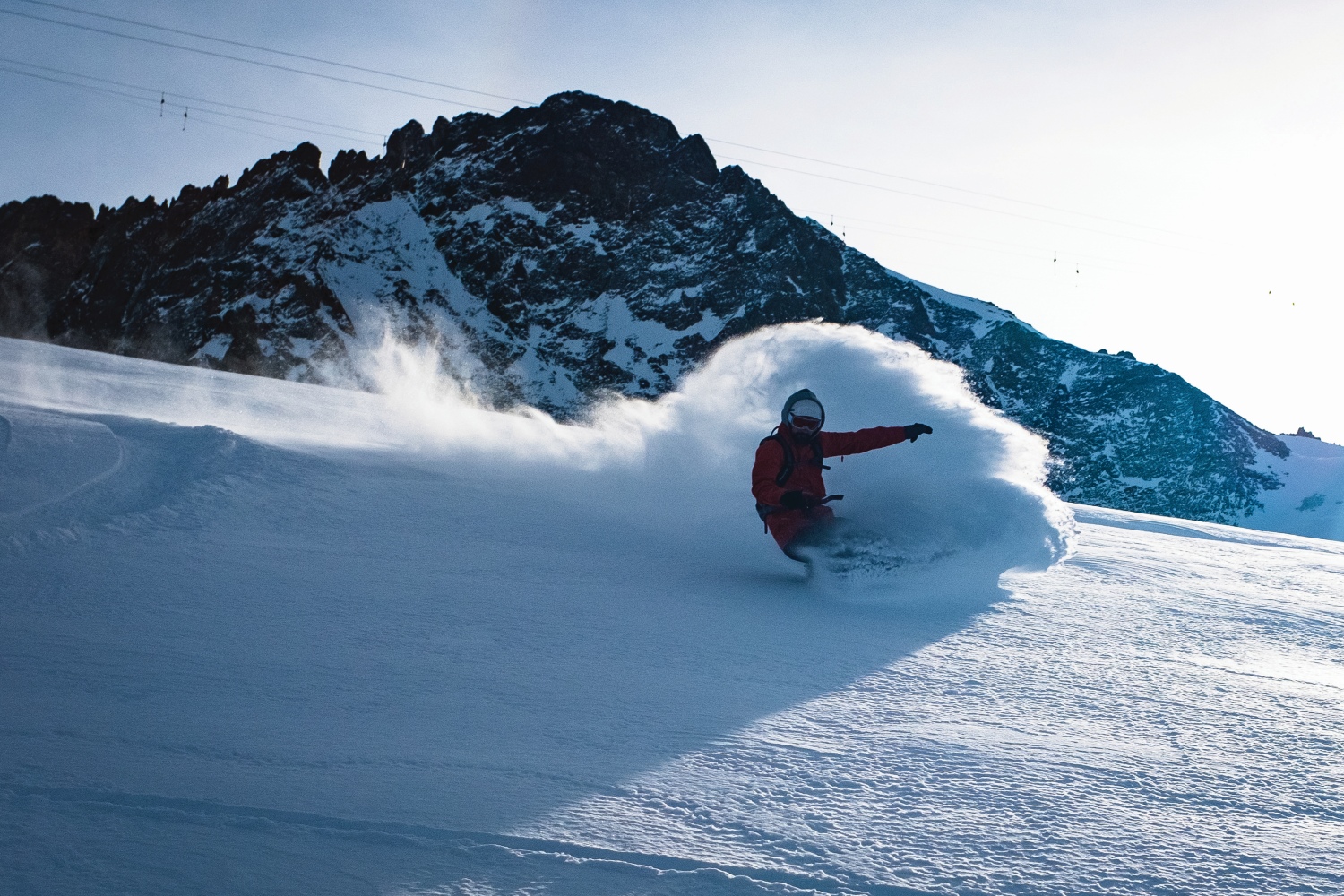
La Grave
It might seem perverse including a place with fewer than 500 visitor beds and a single lift on this list of the top French ski resorts. But for a certain kind of skier, resorts don't get much better than La Grave.
It's among the smallest ski resorts in France, but La Grave nonetheless enjoys an outsized reputation as one of the best places on the planet for freeriding. Think Chamonix, without the crowds, or Jackson Hole, with far gnarlier descents. What the mountain lacks in infrastructure, it makes up for in the steepness and technicality of its terrain, and the decision not to develop it any further is a deliberate one—it's all un-pisted backcountry. Left as God intended, for brave free skiers to descend in whichever way—and however fast—they see fit.
The glaciated peak at the top of the ski resort is La Meije, a famously gnarly mountain that was one of the last major summits in the French Alps to be conquered. The bulk of the skiable terrain is down the mountain's north face, which doesn't see much sun, but gets plenty of snow. Given the conditions and the available off piste terrain, it's little wonder luminaries like the American big mountain pioneer Doug Coombs chose to make their homes here (and it's a mark of this mountain's seriousness that Coombs was killed here a few seasons after setting up shop).
As you might expect from such a place, the village is a no-frills affair—a ribbon of traditional alpine chalets with a couple a 70s hotels strung out along a road beneath the iconic cable car. La Grave's version of ski in, ski out accommodation are the vans parked near the bottom of the slope, and while there can be a lively après ski scene, this is the kind of place where if the snow's falling, the bars will be empty. If you want pampering, luxury and a range of child-friendly activities, you're best off heading elsewhere (to nearby Alpe d'Huez, for example). But if your idea of a good ski holiday is all about tackling the gnarliest lines possible, La Grave is arguably the best ski resort in the world.
For more info and the full lowdown on La Grave, read our Weekender story from the 2022 SNOW print annual.

La Plagne
It's name is a form of the French word for "flat," and perhaps because of this, La Plagne has long had a reputation as primarily a destination for families. But there's nothing boring or plain about the country's biggest resort. Sure, there are flat sections to some of the pistes, and plenty of family-friendly, motorway-style blues—but the resort also has challenging tree runs, tight couloirs and, in the North Face of Bellecôte, one of the longest and wildest accessible off-piste areas in the French Alps. It's also just massive, with 225km of pistes by itself, and 425km if you count the full Paradiski area, which includes neighbouring Les Arcs (see below).
La Plagne is snow sure, with lifts that top out at 3,250m, and a lot of north-facing terrain above 2,000m. This winter sees the opening of a brand new, €26 million (£22 million) gondola to link the Bellecôte glacier to the Roche du Mio area of the resort. It will make accessing the highest, most snow sure areas quicker and easier, and will also carry skiers to a restaurant overlooking the famous north face, offering incredible views.
The 11 separate villages that make up La Plagne each have their own character. So while it's true that many of the buildings in Plagne Centre are slightly charmless, 1970s moon base style constructions, you can find chocolate box chalets too if you head to Plagne 1800, Montchavin or Montalbert. In terms of variety, this place is hard to beat, and it feels like a reassessment of its reputation is long overdue—hence its place on this list.
Check out our full resort review of La Plagne here.
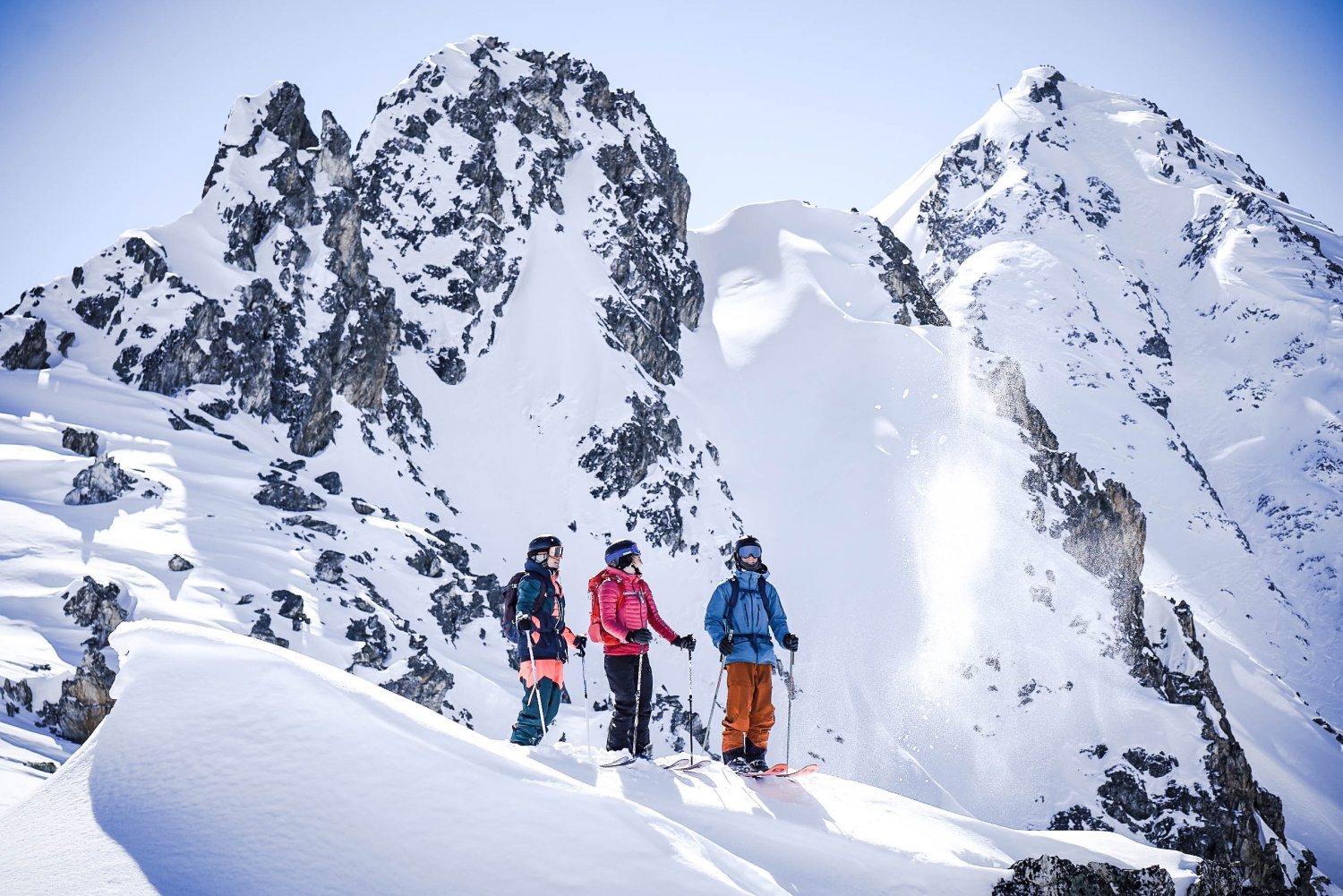
Les Arcs
Les Arcs has a lot going for it. It's relatively high, with well-designed, snow sure slopes and a modern lift system. There are all types of accommodation, from the small self-catered apartments you find in Bourg Saint Maurice (connected by a fast funicular railway) to the newer ski-in, ski-out apartments you find in the purpose built Arc 1950 village
In terms of terrain, there's something for everyone. Beginners can learn the ropes on the blue runs above Arc 1600, while daredevils can satisfy their need for speed on runs like the knee-burning Villaroger, which streaks down the side of the Aiguille Rouge and includes 2,000m of vertical drop over seven kilometres. Love a bit of off piste? Make a beeline for the north face of the Aiguille Rouge or cruise over to the neighbouring resort La Plagne, via the Vanoise Express cable car, which is celebrating its 20th anniversary this year, and rip down the north face of the glacier du Bellecôte.
(Incidentally, if it's the linked area of Les Arcs that appeals to you most, check out our list of the best linked ski areas in Europe.) Les Arcs isn’t just known for having some of the best skiing in France, it's also famous for its lively and unpretentious après ski scene. The cover bands who ply their trade at the long-serving Red Hot Saloon Bar, in Arcs 1800 are always worth checking out.
Read our full Les Arcs resort guide here.
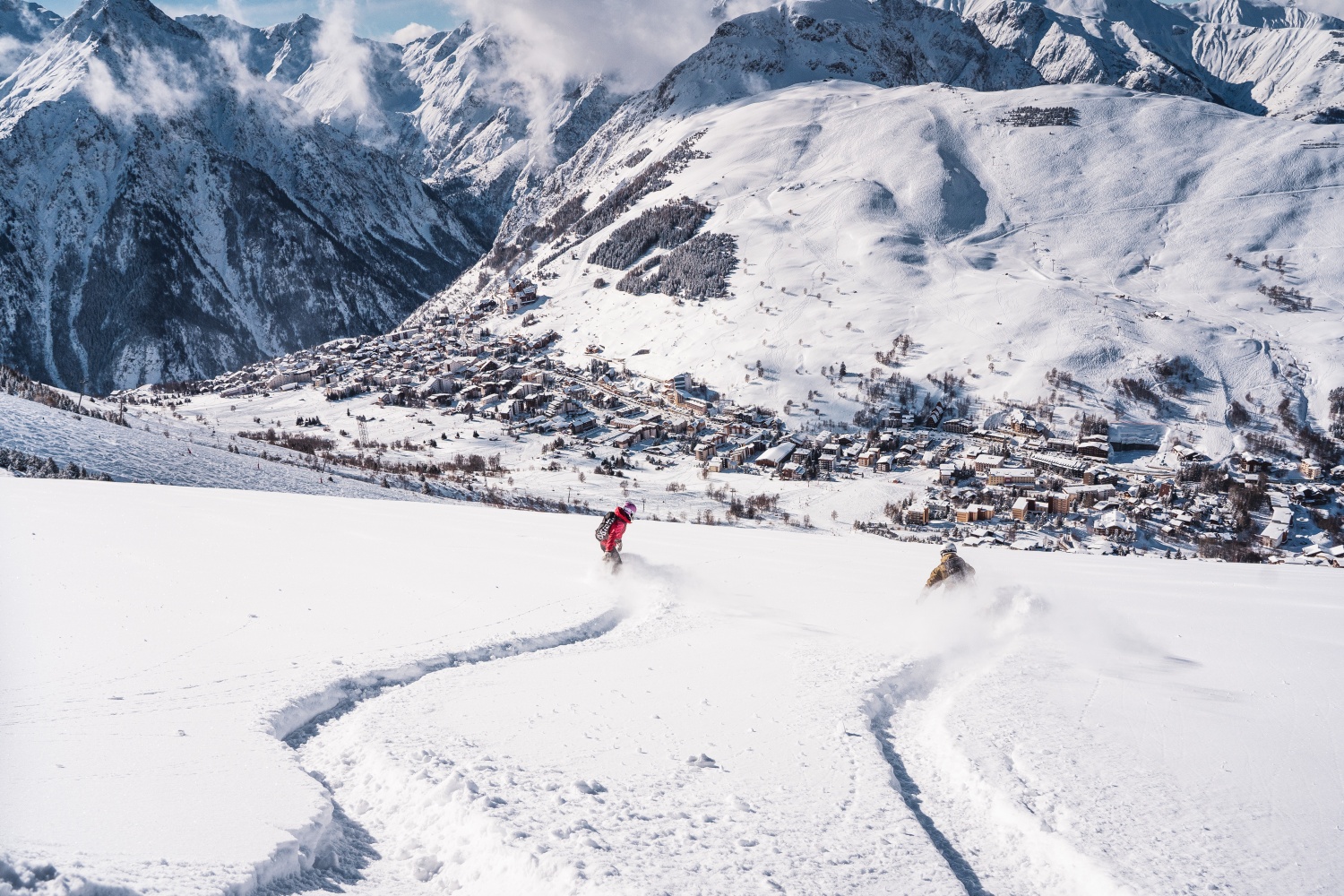
Les Deux Alpes
Les Deux Alpes sits in the shadow of Europe’s largest skiable glacier and is one of the best ski resorts in France for high altitude skiing. It's also a place that's expanding at a rate of knots. Since December 2020 the resort has been managed by SATA Group, which promised to invest a whopping €290 million over 30 years. SATA’s plans involve putting L2A (as it's known) on the map as a four-season destination—bolstering the summer glacier skiing that the resort is famous for with more infrastructure for mountain biking and other activities.
Recent new improvements include a major revamp for the nursery slopes at the centre of the resort, with the aim of creating fewer pinch points and allowing easier access to ski lifts. This winter, the resort will open arguably its most visible new addition—a brand new Jandri Express gondola, with the old circular cabins replaced by shiny new ones, designed to seat up to 24 skiers each.
As for the après ski? You’ll be spoiled for choice—there are more bars in Les Deux Alpes than you can shake a (ski) stick at. Standout venues include the Bistrot Chamois Lodge for its great range of local wines and Smithy’s Tavern for the cocktails (we recommend the Smithy’s Old Fashioned—just don’t blame us when the hangover kicks in).
The resort also has a fantastic selection of accommodation, ranging from catered chalets to luxury hotels such as Chalet Mounier, a spa hotel with a Michelin-starred restaurant. Finally, it’s worth noting that this is a resort with a bright future. In addition to the recent investment, it’s believed that it will soon be connected to Alpe d'Huez, which is also owned by SATA—although the exact plans have yet to be announced.
Take a look at our full Les Deux Alpes ski resort guide for more details.
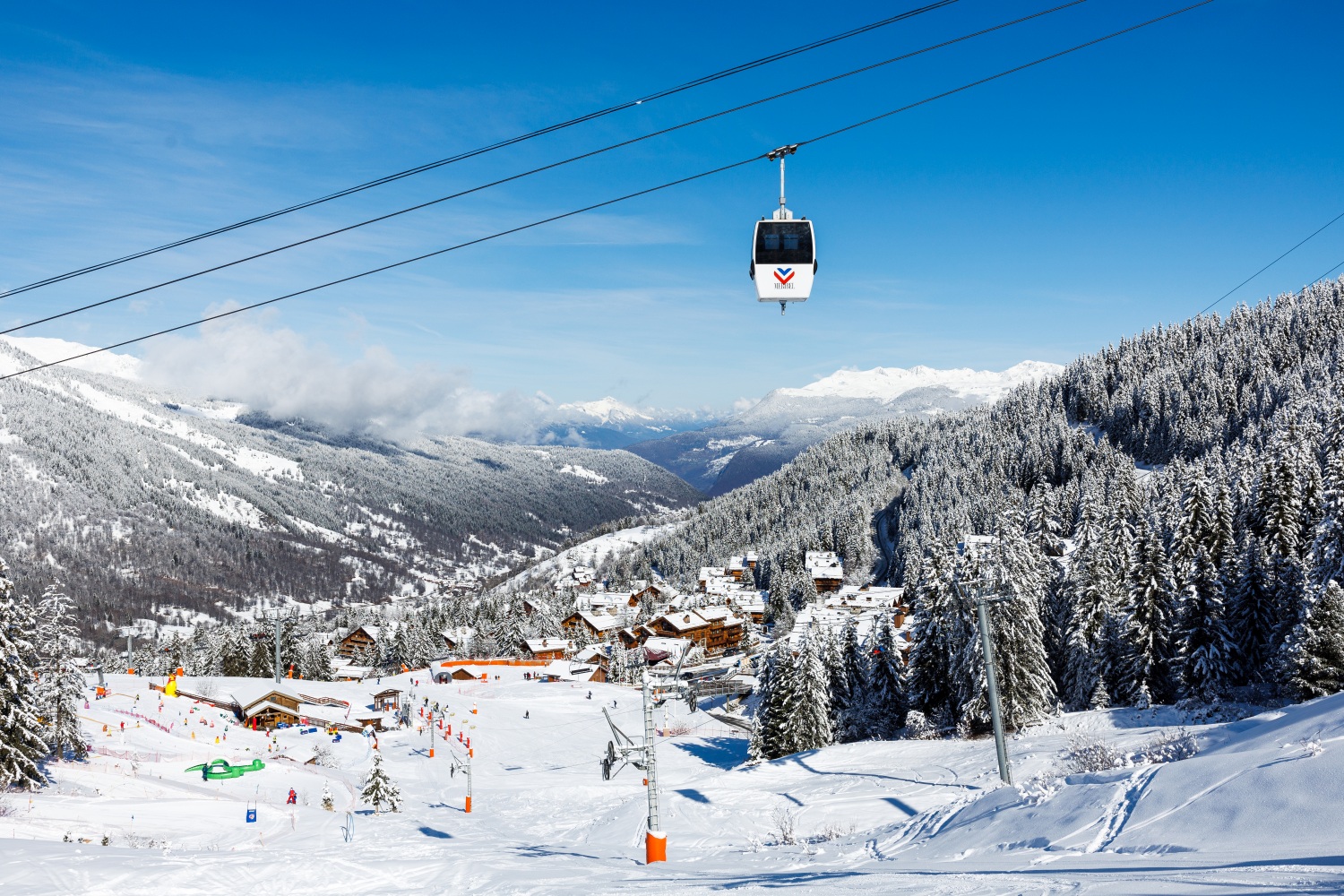
Méribel
Méribel is a pretty French ski resort wedged into a forested valley known as Les Allues. It was founded in 1938 by the Scottish ski enthusiast Major Peter Lindsay, who was looking to create a French alternative to the ski resorts of southern Germany and Austria, both of which were run, at the time, by the Nazis. Although it’s part of the massive 3 Vallées, one of the world's largest ski areas, Méribel has plenty to offer in its own right—with 150km of pistes at altitudes of between 1,450m and 1,700m.
The village has everything you could ever need too. Neighbouring Courchevel might be more famous for its fine dining, but there's plenty of posh nosh in Méribel, including l'Ekrin, where Michelin-starred Chef Laurent Azoulay serves up some seriously creative cuisine. The bulk of the development in Méribel town took place after World War II, but unlike many of the French resorts built during the post-war skiing boom, Méribel had a policy of not allowing modern tower blocks.
Its original architects Christian Durupt, Paul Grillo, and André Dutour, worked closely with Lindsay (who by then had been promoted to Colonel) to ensure that all the buildings would be constructed in the traditional Savoyard style—using wood and stone for the walls, and slate for the roofs. While the whole 3 Vallées attract a lot of British skiers, Méribel is perhaps the most anglophone of the three. But if that's the kind of home away from home vibe you're after, it's a great place to head.
Our full Meribel ski resort guide has even more details about the resort.
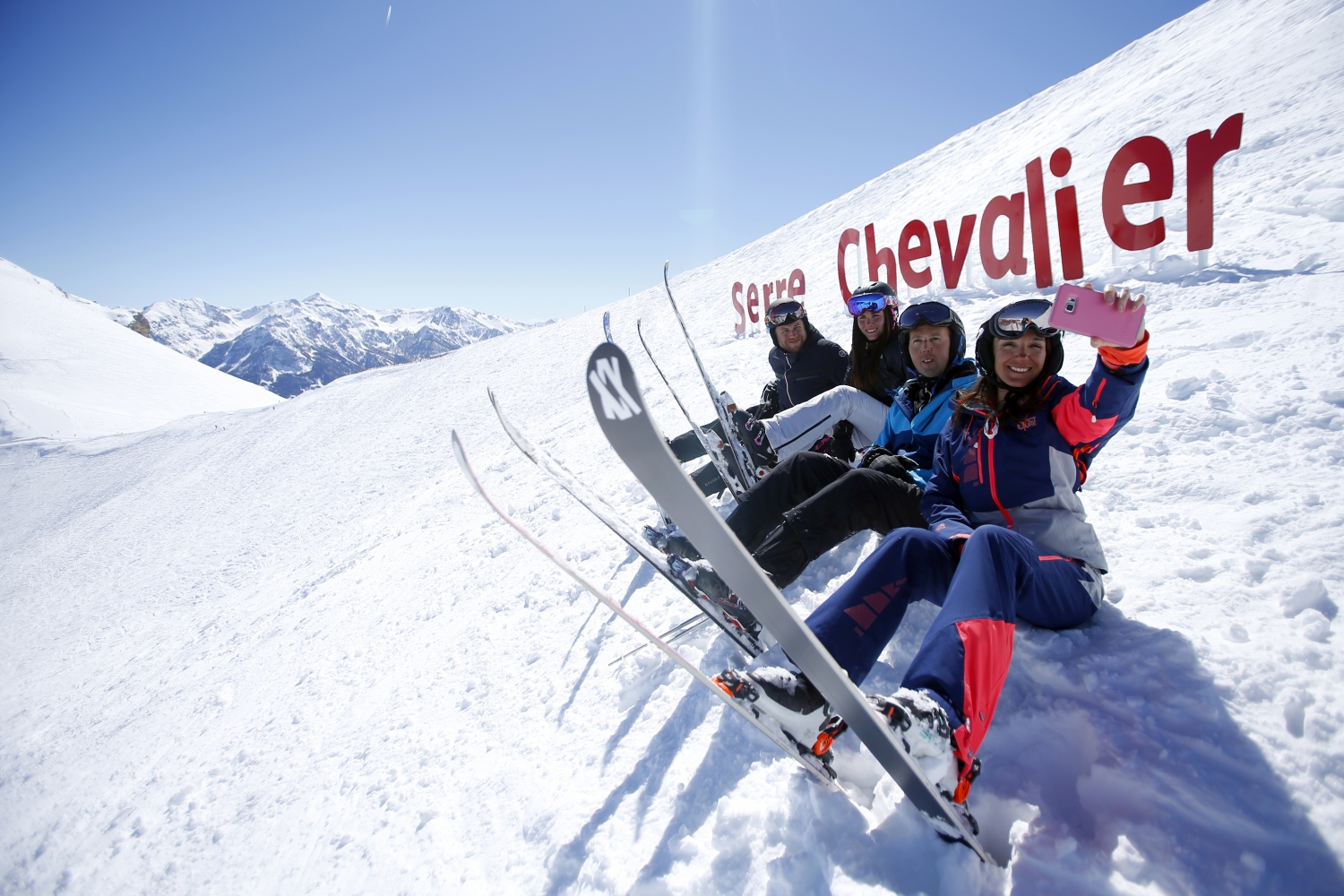
Serre Chevalier
Heading south for the first time? Serre Chevalier is a great place to start – it’s got the largest ski area in the Southern French Alps. It’s also incredibly beautiful, perched just above the pretty mountain town of Briançon (which means even more accommodation to choose from), surrounded by larch forests, and nudging up against the spectacular wilderness of the Ecrins national Park. No fewer than 59 lifts provide easy access to 82 runs (13 black, 30 red, 26 blue and 13 green), and there’s rarely any shortage of the soft stuff – 80 per cent of the slopes are higher than 2,000 metres.
There are even more reasons to visit in winter 2023/24 too, starting with the opening of the Pontillas gondola, which will link the village of La Salle les Alpes to the Col de Méa area, and the expansion of the stunning Grand Hôtel (which was the resort’s first hotel). Investment in low-energy snowmaking technology will create a new network of nursery slopes higher up the mountain, although the sustainability doesn’t stop there – Serre Chevalier is investing €26M in efforts to reduce its carbon footprint.
This involves various reforestation projects, the recovery and recycling of old ski lift components when lifts are taken out of service, and more eco-friendly architecture.
Get the lowdown on this family-friendly resort with our full review of Serre Chevalier.
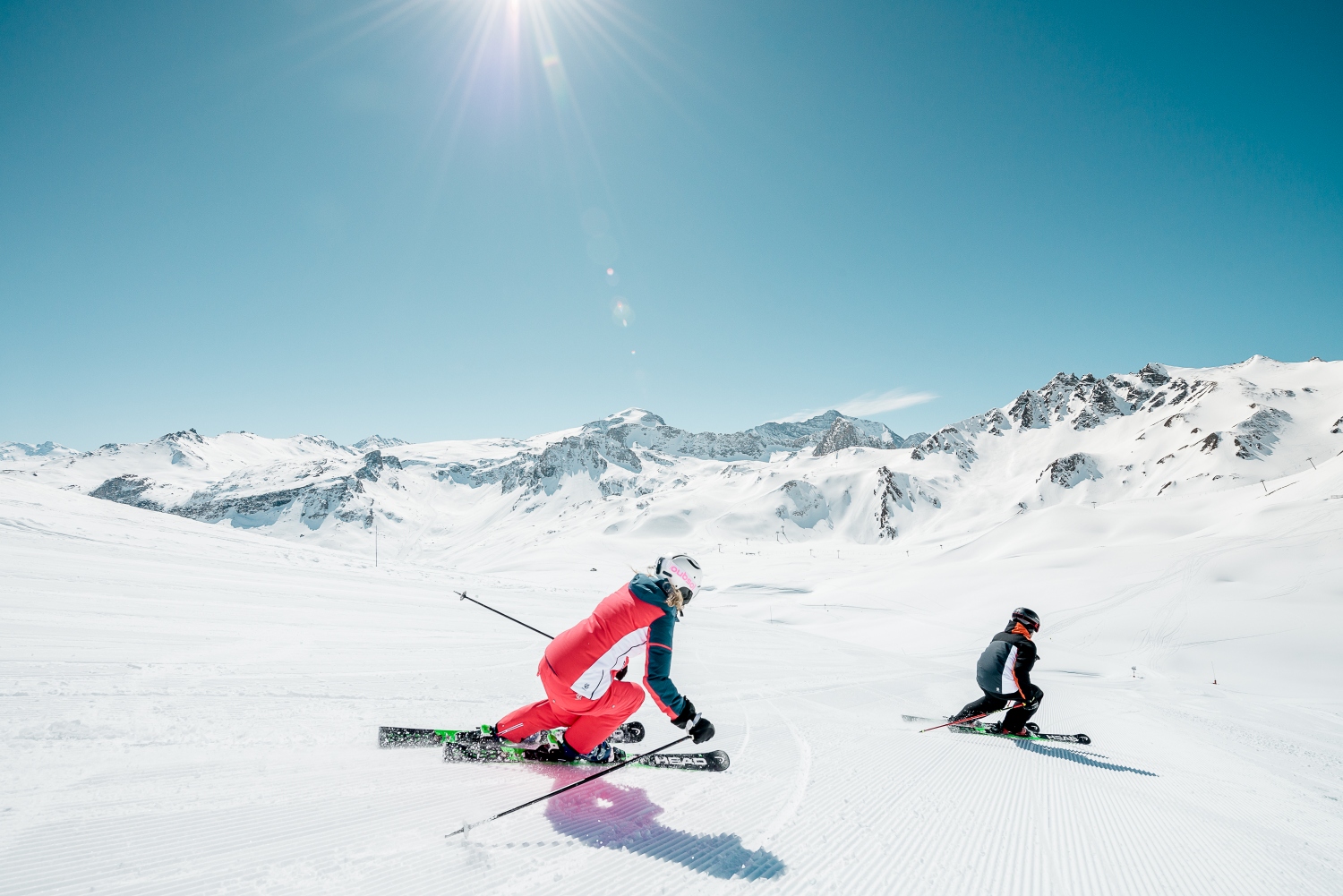
Tignes
For far too long, Tignes has been viewed as the ugly stepsister to Val d'Isère's sparkling Cinderella. Thankfully, in the past few years there's been something of a reassessment of this perception. Partly this is because Brutalism (the architectural style so beloved of France's ski resort builders in the 70s) is having a bit of a moment. But more than anything else, it's because of Tignes' location. The construction of a resort here, in an accessible, but very high bowl, now seems more prescient than ever, as the planet warms. These days, the higher your base is, the better, and at 2,100m above sea level the village of Tignes Le Lac is as high as ski resorts in France get. In fact, it's the country's highest ski resort, a title it shares with Val Thorens.
As well as being snow sure, the terrain here is excellent, with plenty of variety—from massive, wide open reds and blues, to tight, technical off-piste couloirs. There are tree runs down near the village of Les Brevieres for when the visibility's bad (along with some excellent off piste terrain) and skiing on the glacier for when it's hot. Snowboarders and freestyle skiers will appreciate the full-sized superpipe (one of the few left in Europe), the terrain parks, and the playful terrain of the legendary Palafour run (known to locals simply as P4).
The accommodation in Tignes is as varied as the ski area, with options to suit every budget. A brand new Club Med opened here in early 2023, offering yet another reason to visit. Because of the altitude, and the snow tends to be good in the early and late part of the season, when liftpasses are often cheaper, making thus one of the most popular ski resorts with school groups. And while the village might have fewer of the traditional chalets and Michelin starred restaurants that make Val d'Isère so des res, it still exudes a certain alpine charm.
Combine the variety of the various separate villages with the consistently good snow conditions, and the sheer size of the ski area, and it's easy to see why Tignes is now considered one of the top French ski resorts—whatever the snobs say about its tower blocks.
Read our full ski resort review of Tignes for the full lowdown.

Val Thorens
As well as being the most modern and least pretentious of the main 3 Valleys resorts, Val Thorens is also the highest and most snow sure. The town sits at 2,300m, making it the highest-altitude resort anywhere in the Alps, and 99 percent of its slopes are over the 2,000m mark. The resort often opens in mid-November, and closes in May. If you're booking an early or late season trip and you're worried about snow coverage, Val Tho (as the locals call it) is about a safe as bet as you can get in these climate compromised times.
The pistes are enormous, wide and serviced by high capacity lifts, capable of carrying hundreds if not thousands of skiers per hour. These also offer access to some incredible backcountry terrain, and the high altitude means that it's usually cold enough for the snow to stay good several days after a dump.
Built in the 1970s, the village isn't ever going to win prizes for being France's prettiest, but it's well thought out, with much of it connected by lifts to save you walking up and down stairs constantly. In recent years, there's been a noticeable move upmarket, and Val Thorens now boasts its own Michelin star restaurant, Les Explorateurs in the Hotel Pashmina, in addition to the 2-Michelin star establishment René et Maxime Meilleur, in Les Menuires, just down the valley.
The main attraction here though, is the mountain. Wake up in the morning, and you're right there in the thick of it. Which is why Val Tho deserves its place as one of the best ski resorts in France.


